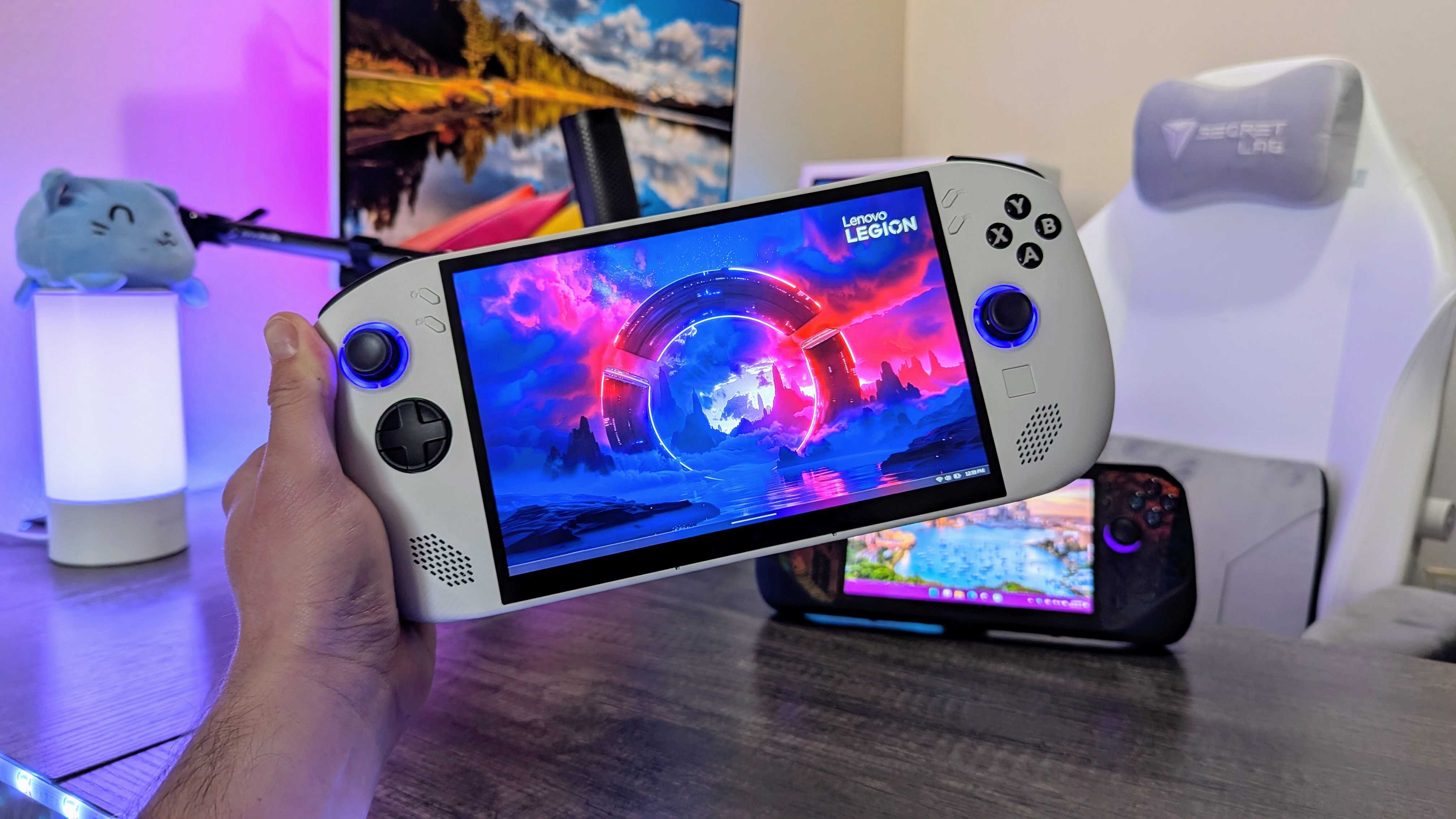
The market for portable gaming on PCs is growing steadily, as businesses are increasingly pouring funds into this sector. Notably, Lenovo is now showing a greater commitment with the launch of its second Legion Go device.
The Lenovo Legion Go S boasts a sleek, high-end design that appeals to mainstream gamers, making it one of the most attractive and comfortable gaming handhelds available today. My anticipation for this device was evident at its unveiling at CES 2025, leading me to believe that the Legion Go S could potentially replace my ASUS ROG Ally X as my preferred portable gaming device.
Regrettably, the Lenovo Legion Go S doesn’t meet our high expectations, despite coming very close. This is particularly frustrating because it seems almost perfect. However, misleading pre-launch details, a relatively weaker 4-core processor that falls short compared to top-tier gaming handhelds, and an expensive price point that aims to compete with those devices, significantly undermines the Legion Go S. Despite its stunning screen or ergonomic controls, these flaws make it less appealing.
Instead of purchasing the Lenovo Legion Go S at its current price, consider buying the previous-generation Legion Go or the ASUS ROG Ally X if they’re on sale. However, there’s still a chance for the Legion Go S, as it will be updated with SteamOS later this year, which could potentially improve its value.
Legion Go S review: Pricing and specifications
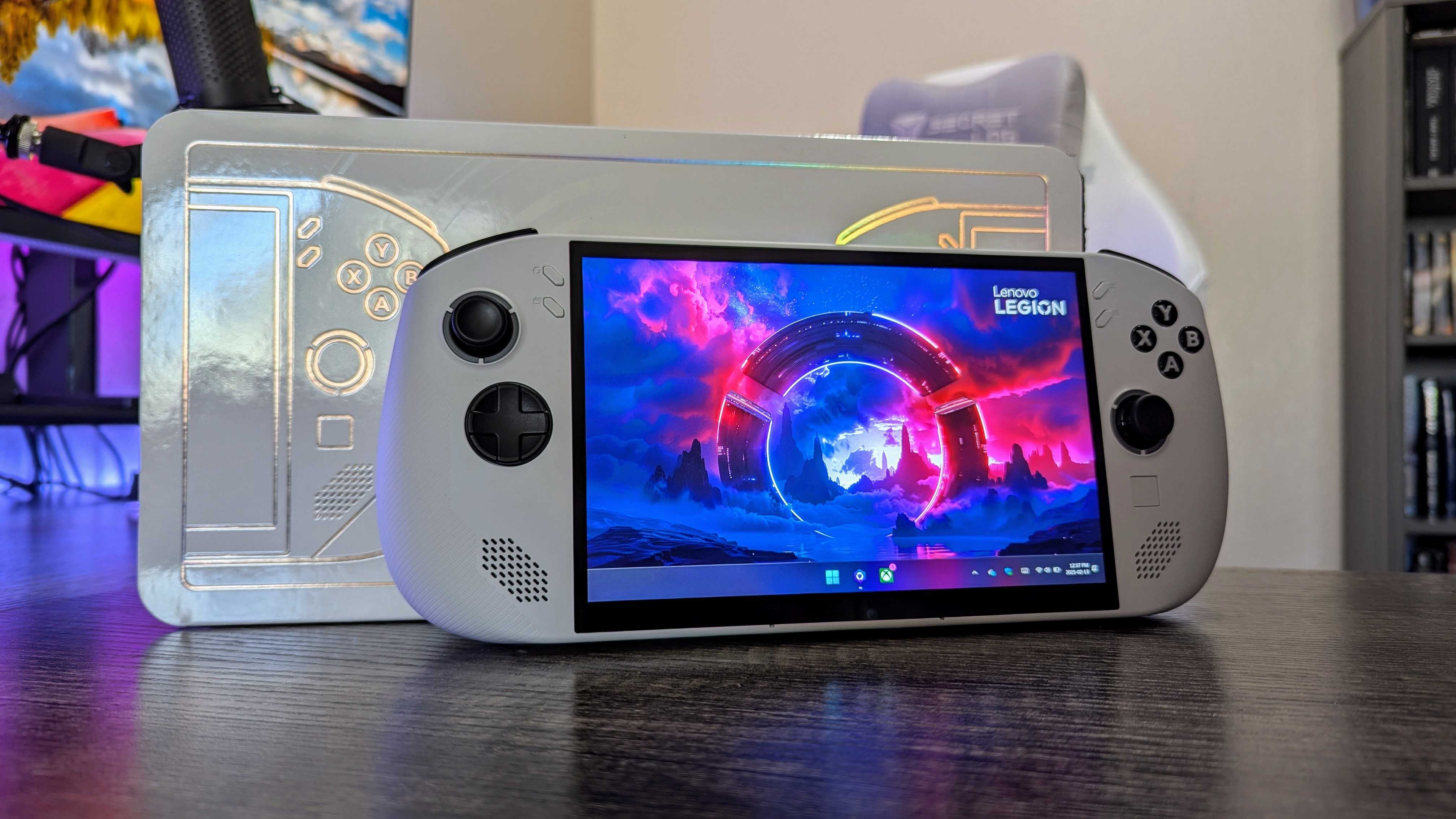
- The Lenovo Legion Go S launches at $730 with the Ryzen Z2 Go.
- A more affordable $600 model is coming, but it’s still not a good value.
- If the SteamOS version launches at $500, that will be the one to get.
- Value rating: ⭐⭐⭐
The Lenovo Legion Go S, though it carries a premium PC gaming handheld price tag, doesn’t have hardware that fully justifies this classification. At its initial launch, you can purchase the Lenovo Legion Go S from Best Buy for $729.99. This configuration includes an AMD Ryzen Z2 Go processor, 32GB of RAM, and a 1TB solid-state drive. Note that the AMD Ryzen Z2 Go is the least powerful chipset in the new AMD Z2 series designed for gaming handhelds, and it’s unique to the Lenovo Legion Go S.
Regarding the Lenovo Legion Go S, though it’s a 4-core chipset model built on an older architecture, it surprisingly matches prices with the Lenovo Legion Go and ASUS ROG Ally X, both of which boast greater power. You can find a version of the Legion Go S listed for $599.99 on Amazon, which will reportedly come with reduced memory (16GB) and storage (512GB) upon release, but it will still feature the Ryzen Z2 Go.
After Lenovo had previously disclosed that the Legion Go S would feature an AMD Ryzen Z1 Extreme setup, this configuration was noticeably absent upon its announcement. However, the device’s SteamOS version could prove to be its redeeming quality, with plans for a release later in 2022 at $499.99. If it maintains this price point, the Legion Go S might emerge as an impressive option compared to the Steam Deck and other portable gaming devices; we’ll need to wait until later to verify this.
Inside the package, you’ll discover the Lenovo Legion Go S portable gaming console, accompanied by a 65W USB Type-C rapid charger, and a three-month subscription to PC Game Pass. This product comes with Lenovo’s one-year “Legion Premium Support” warranty.
Legion Go S review: Design and build quality
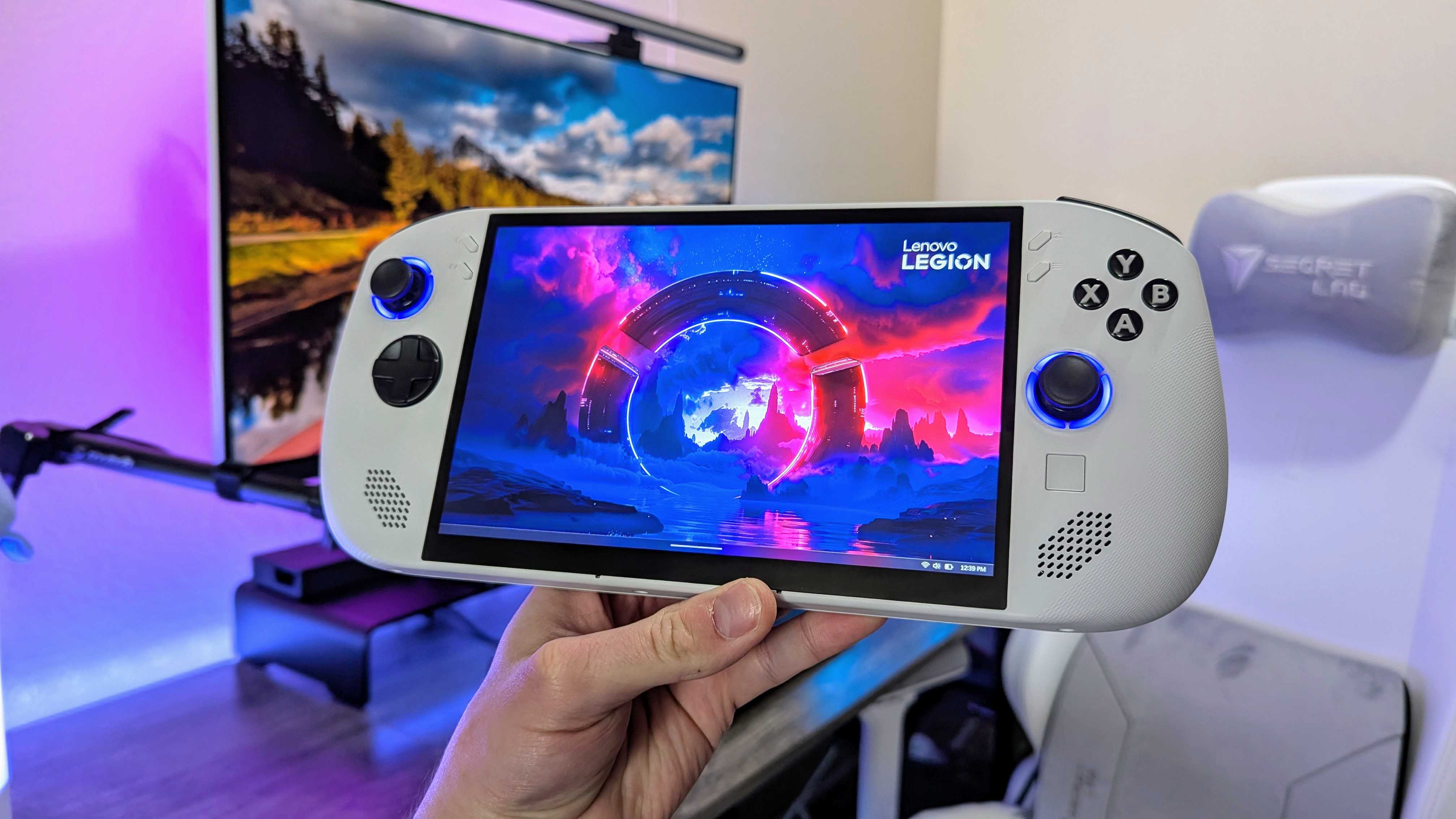
- The Legion Go S is a major departure from the first-gen Legion Go.
- Its all-in-one design trades versatility for refinement and comfort.
- This is an extremely comfortable handheld for the size, and it looks great.
- Design rating: ⭐⭐⭐⭐½
Upon examining the Lenovo Legion Go, we admired its pioneering first-gen gaming handheld design for its exceptional versatility among competitors. However, we also pointed out some drawbacks, such as its awkward handling and less-than-appealing aesthetics. In contrast, the Lenovo Legion Go S seems to be a complete turnaround – this is a streamlined, elegant all-in-one handheld that has opted for enhanced ergonomics over the modularity found in its predecessor.
The Legion Go S boasts a stylish two-tone white-and-black frame, with its impressive 8-inch screen taking center stage. Accompanying this are thoughtfully positioned controls and speakers, grips that are both prominent and tactile, and tasteful buttons, connectors, and openings. Despite being bulkier and heavier than the ASUS ROG Ally, Steam Deck, and Nintendo Switch, the Legion Go S offers the same level of comfort as its peers.
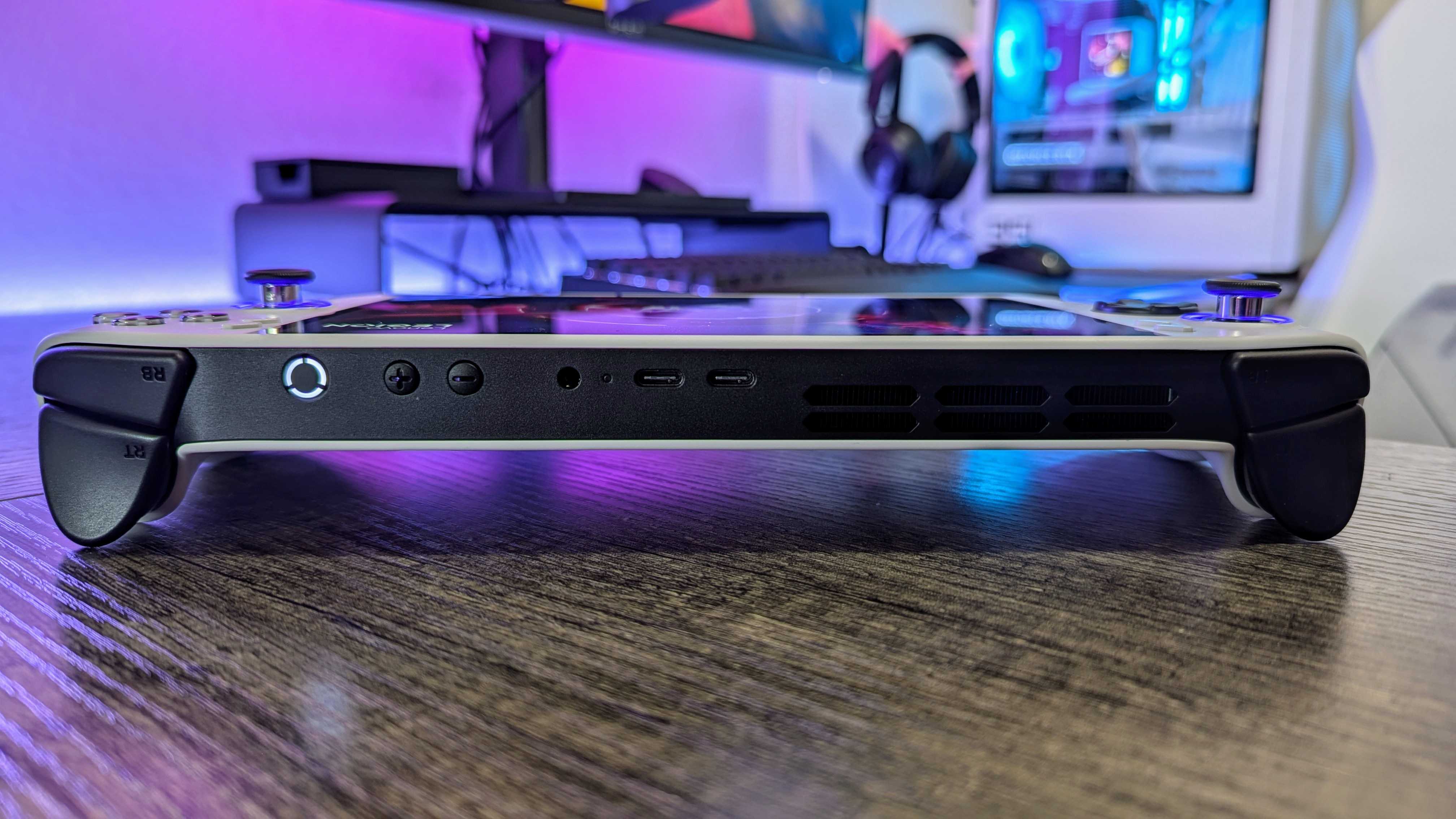
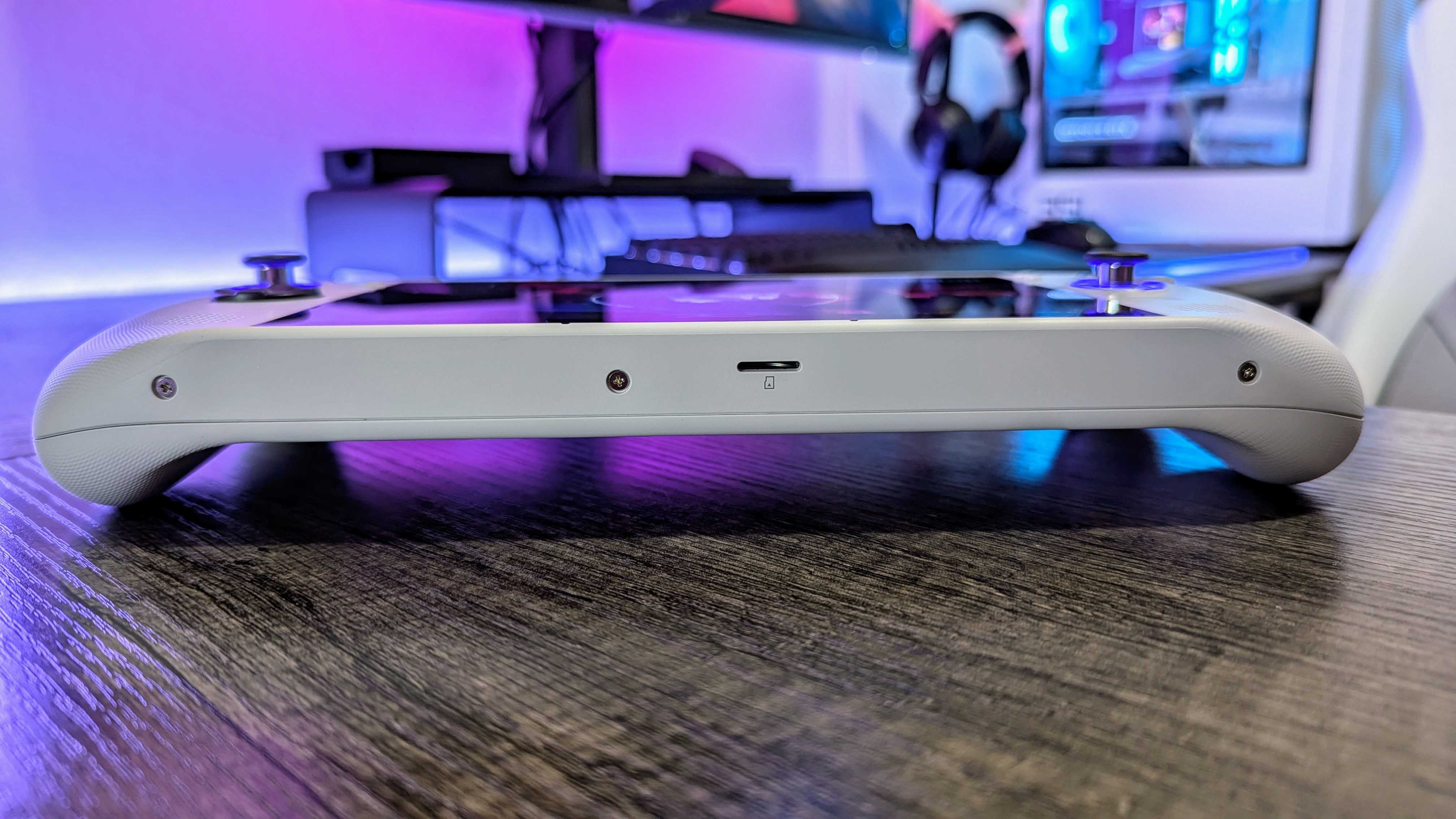
This compact gaming device feels robustly built, with only a few visible screws at the base barely marring its sleek aesthetics that fit snugly in your hands. The power and volume controls have a satisfying tactile feedback, with the former encircled by the Legion logo, which doubles as an LED light – practical and attractive. The dual thumbsticks are likewise adorned with similar triple LEDs, but these are RGB and customizable, adding a touch of style to the device.
On the top of this device, you will find not one but two USB-C 4.0 ports placed side by side, which also support DisplayPort 1.4 and Power Delivery 3.0. A 3.5mm audio jack is positioned nearby these ports for your convenience. If you flip the Legion Go S over, you might find an unexpected microSD card slot located at the bottom of the handheld device. However, its positioning doesn’t affect practical usage in any way.
Legion Go S review: Display quality
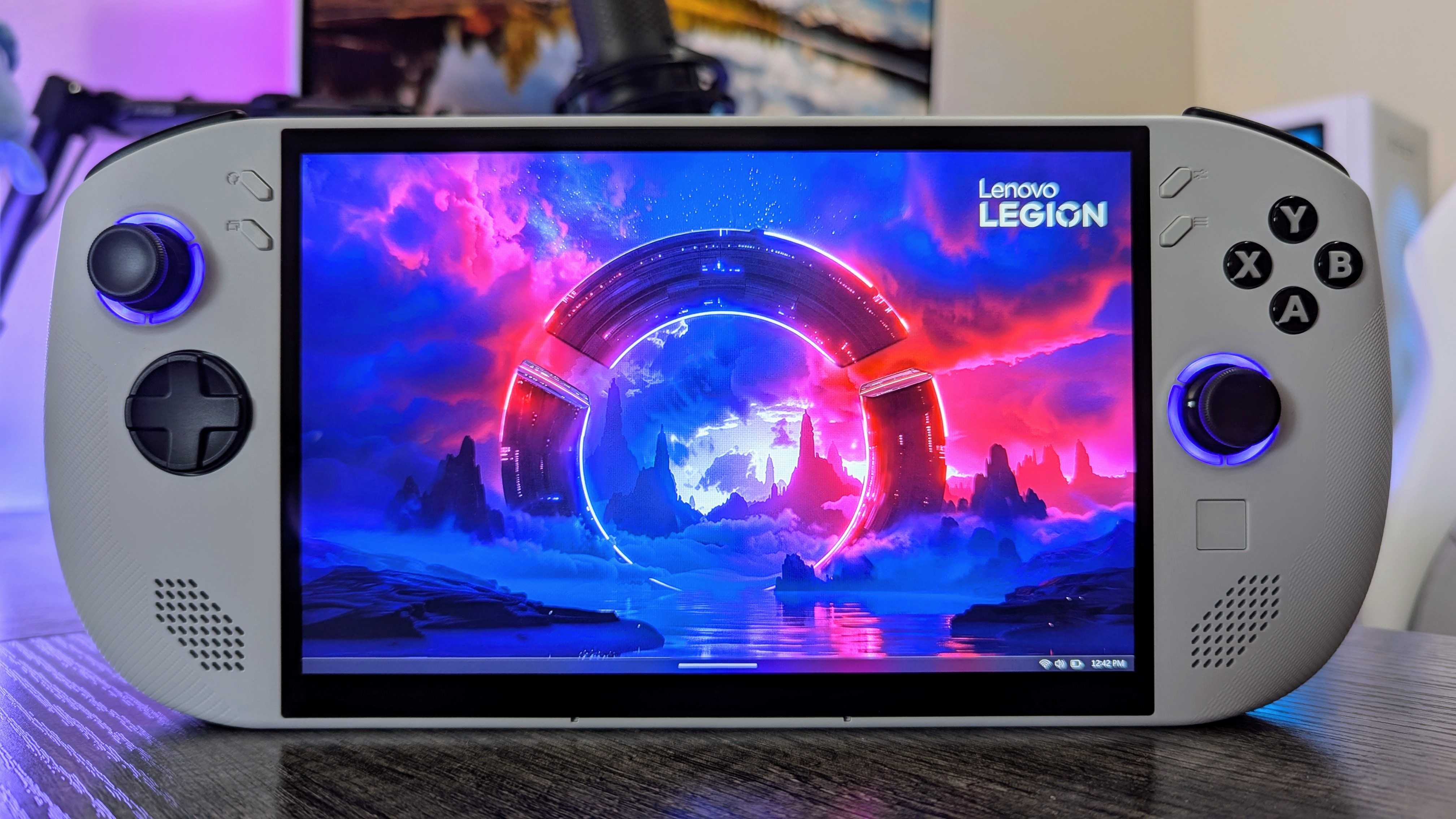
- The Legion Go S rocks an 8-inch IPS LCD panel, now with VRR support.
- It sits in between the Legion Go S and ROG Ally in terms of size.
- This is a gorgeous, bright, and responsive display for gaming.
- Display rating: ⭐⭐⭐⭐½
Among its standout features, apart from its detachable controllers, the Lenovo Legion Go boasts an impressive 8.8-inch display, significantly larger than the standard 7-inch screens found on most gaming handhelds. Although the Legion Go S doesn’t quite match up to this magnitude, its 8-inch IPS LCD screen is still substantially bigger than the ASUS ROG Ally X, and it presents visually appealing graphics. The display offers a taller 16:10 aspect ratio, an FHD+ (1200p) resolution, and a swift 120Hz refresh rate.
The updated Legion Go S offers an additional advantage in terms of performance – it supports Variable Refresh Rate (VRR) between 48-120Hz, a feature missing from the original Legion Go. This allows for a smoother and more consistent gaming experience. On the aesthetics front, this display is quite appealing. While it’s not an OLED panel, the colors are rich and vibrant, and the gaming content runs smoothly, provided the game can be handled comfortably by the Legion Go S.
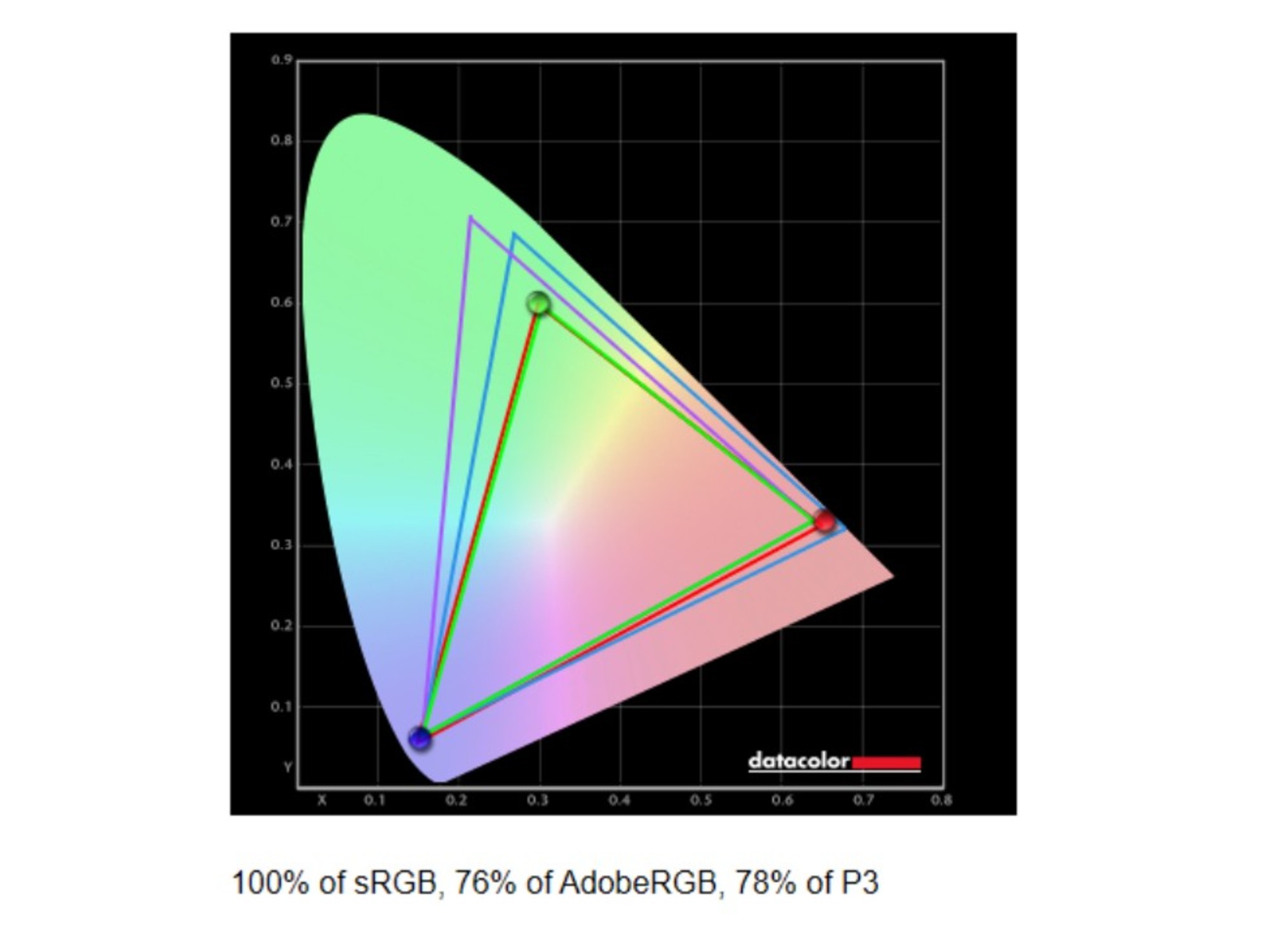
On paper, the Legion Go S may not stand out as much as it does in reality, but this is acceptable. The device covers 100% of the sRGB color gamut, which is more than sufficient for typical content viewed on the Legion Go S. Regarding white balance, it leans slightly towards the cooler tones, and contrast ratios are somewhat above average for an IPS LCD display. However, the Legion Go S maintains consistency in both aspects, preventing annoying backlight bleed from becoming excessive.
One aspect that stands out about this display is its luminosity. It has a minimum brightness of 5.5 nits, which makes it ideal for late-night gaming sessions without causing too much strain on the eyes. On the other hand, it can go up to more than 500 nits, a feature that comes in handy when playing games in well-lit surroundings. Additionally, the Legion Go S boasts an Ambient Light Sensor, which automatically adjusts the brightness levels according to your environment. This is a feature not commonly found on other handheld PC gaming devices.
Every time I use my ROG Ally X, it’s the screen that frequently leaves me yearning for the Legion Go S.
Legion Go S review: Performance and thermals
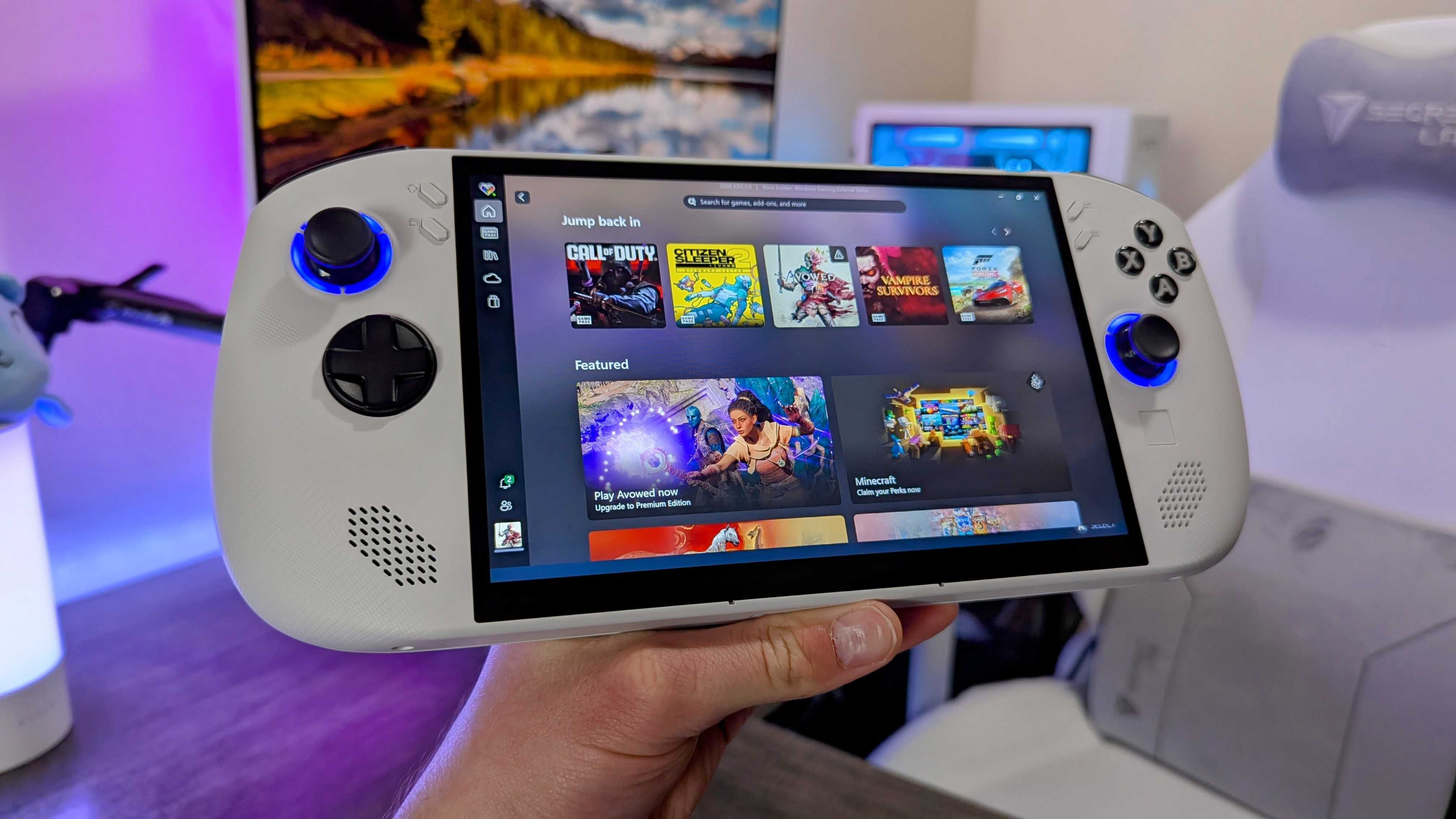
- In a vacuum, the Legion Go S performs just fine with most games.
- However, it’s massively outpaced by older PC gaming handhelds.
- The Ryzen Z2 Go is simply mismatched at this price point in every way.
- Performance rating: ⭐⭐⭐
I’m quite taken with the Lenovo Legion Go S and, in many aspects, my feelings remain unchanged. However, when it comes to the aspect that matters most to many potential buyers – performance – it’s this area where my enthusiasm takes a slight dip. The Legion Go S is equipped with the AMD Ryzen Z2 Go, a new platform designed exclusively for this handheld. According to AMD, this setup offers “excellent value for handheld gaming.
In simple terms, the Ryzen Z2 Go operates on four cores that can reach up to 4.3GHz, built on AMD’s Zen 3+ architecture and an older RDNA 2 GPU architecture for its integrated graphics. In contrast, the previous-gen Ryzen Z1 Extreme features eight Zen 4 CPU cores running at 5.1GHz and a more advanced 12 RDNA 3 GPU cores. However, the price of the Legion Go S doesn’t necessarily reflect such significant differences between the two chipsets.
To clarify, the ASUS ROG Ally with Z1 Extreme retails at $650, while the Legion Go with Z1 Extreme is priced at $750. Interestingly, the Legion Go S comes equipped with the Z2 Go and costs $730. It’s also worth noting that both other handhelds frequently receive discounts, often by $100 or more.
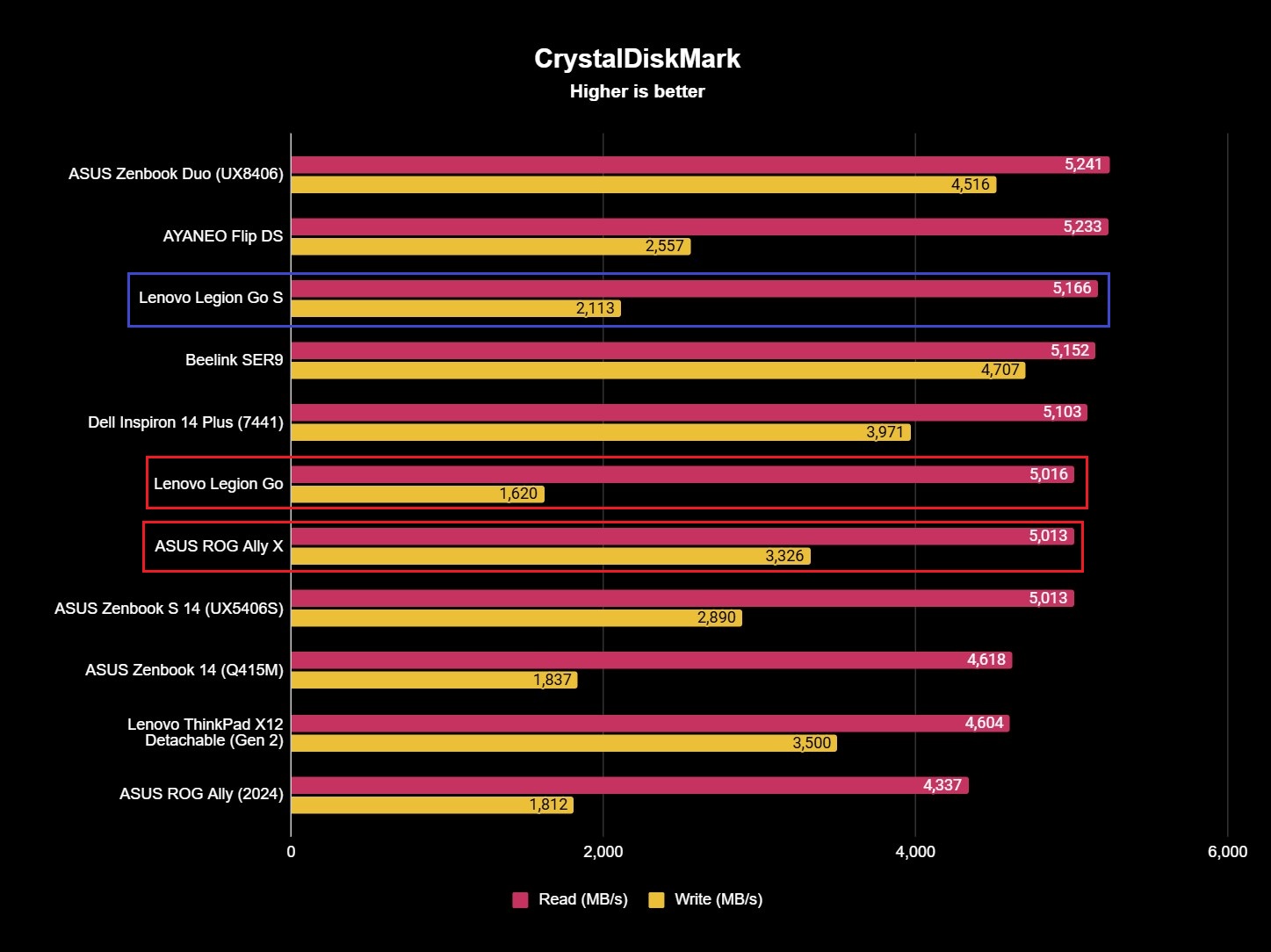
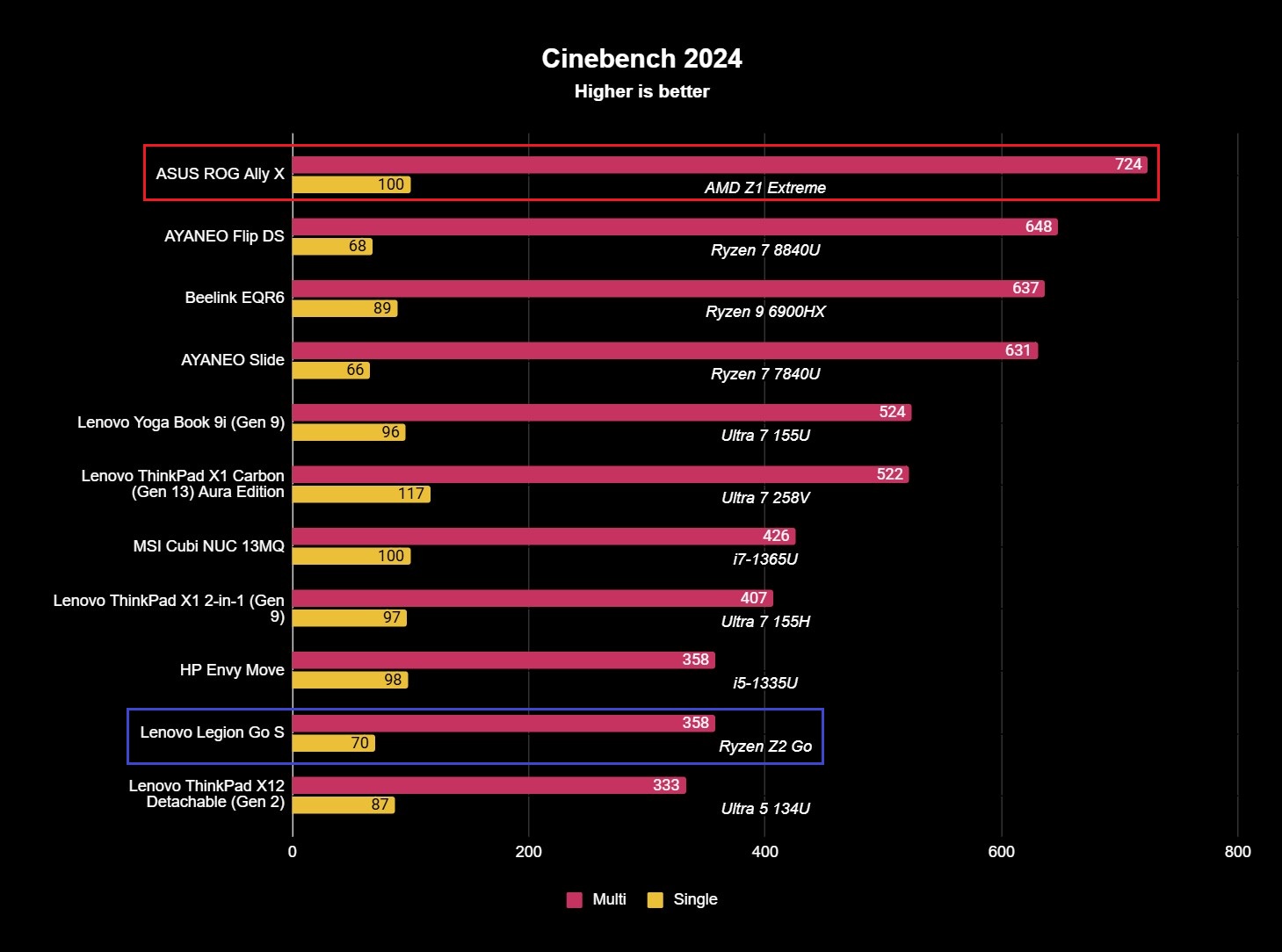
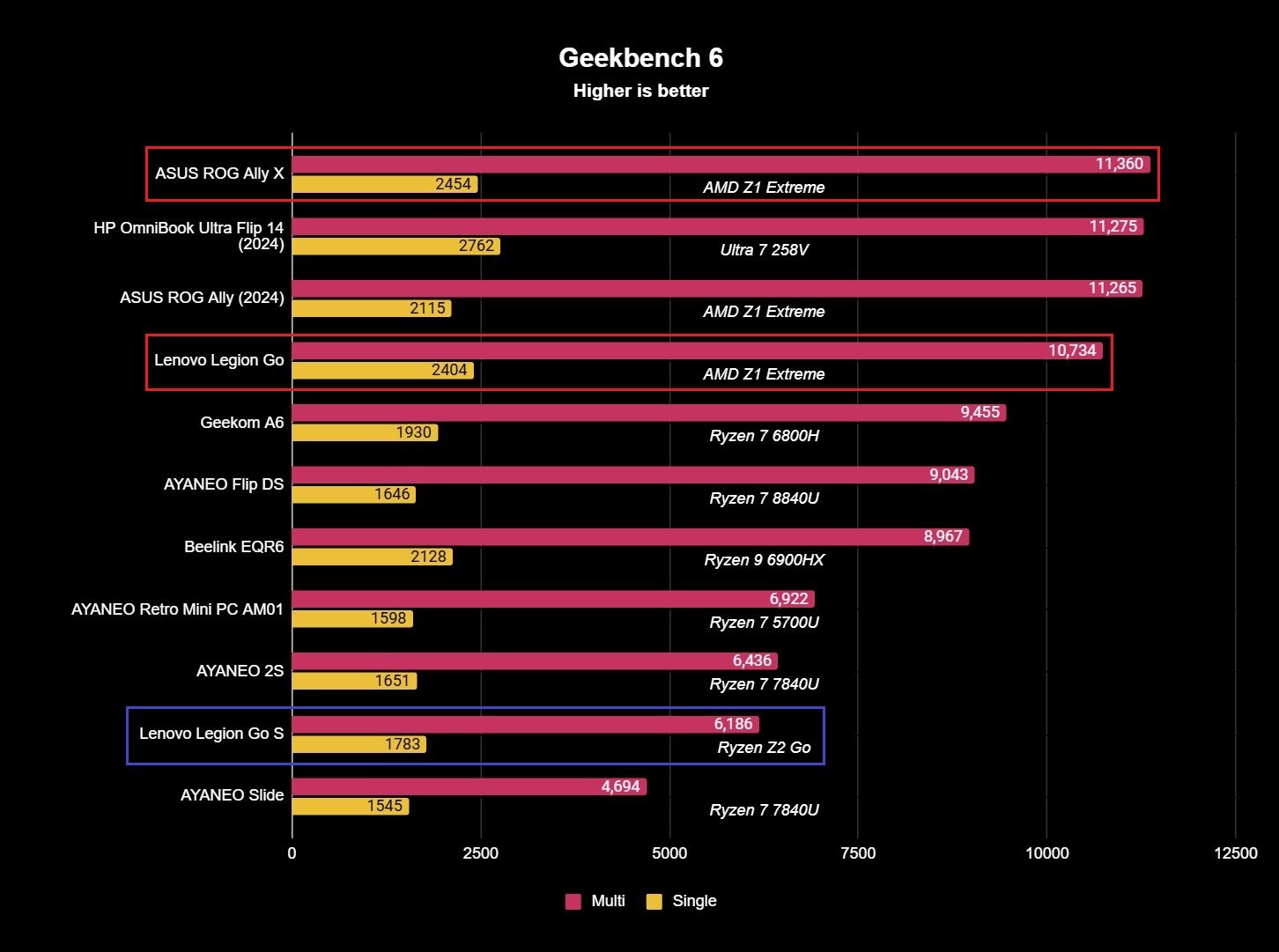
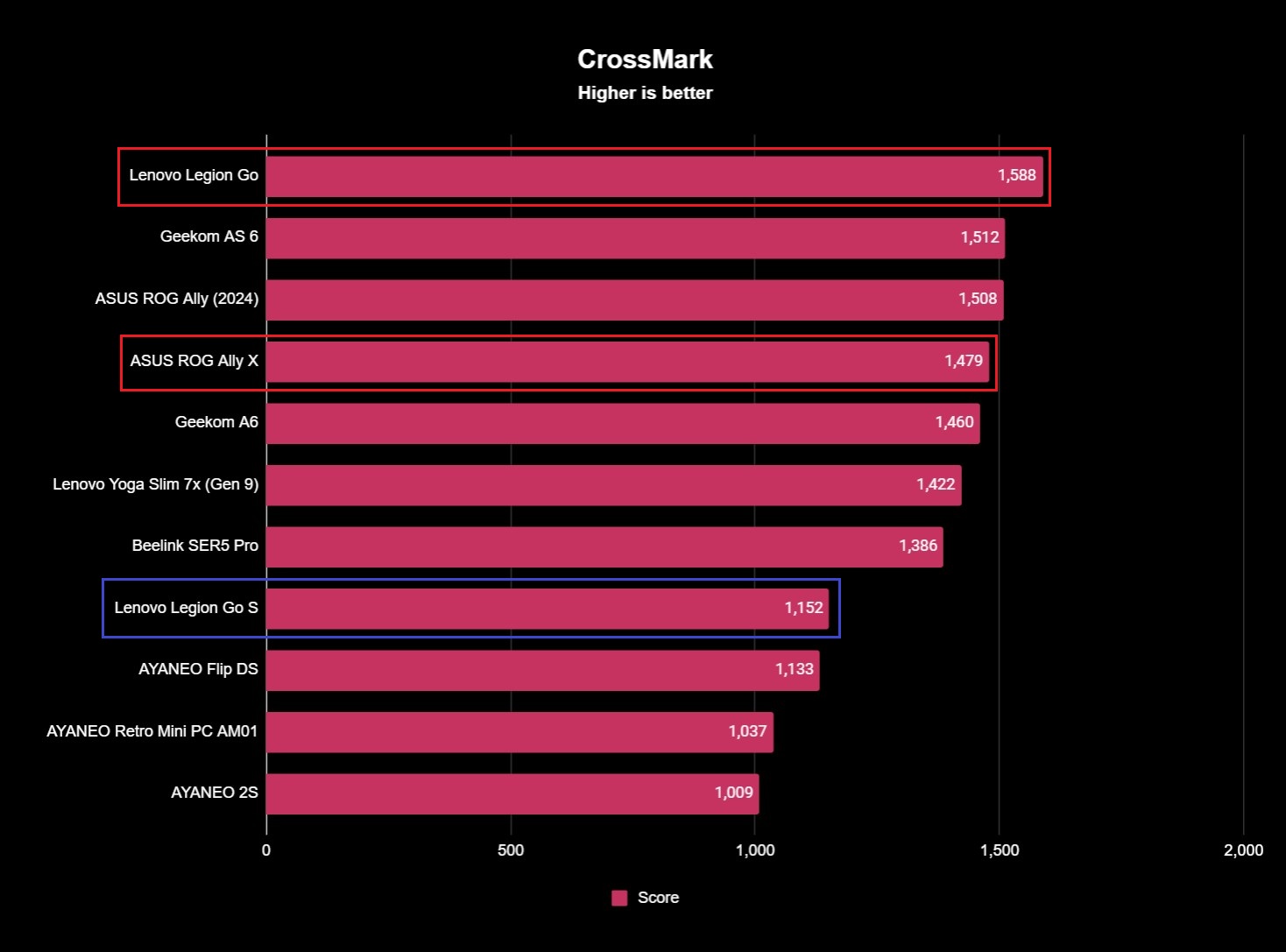
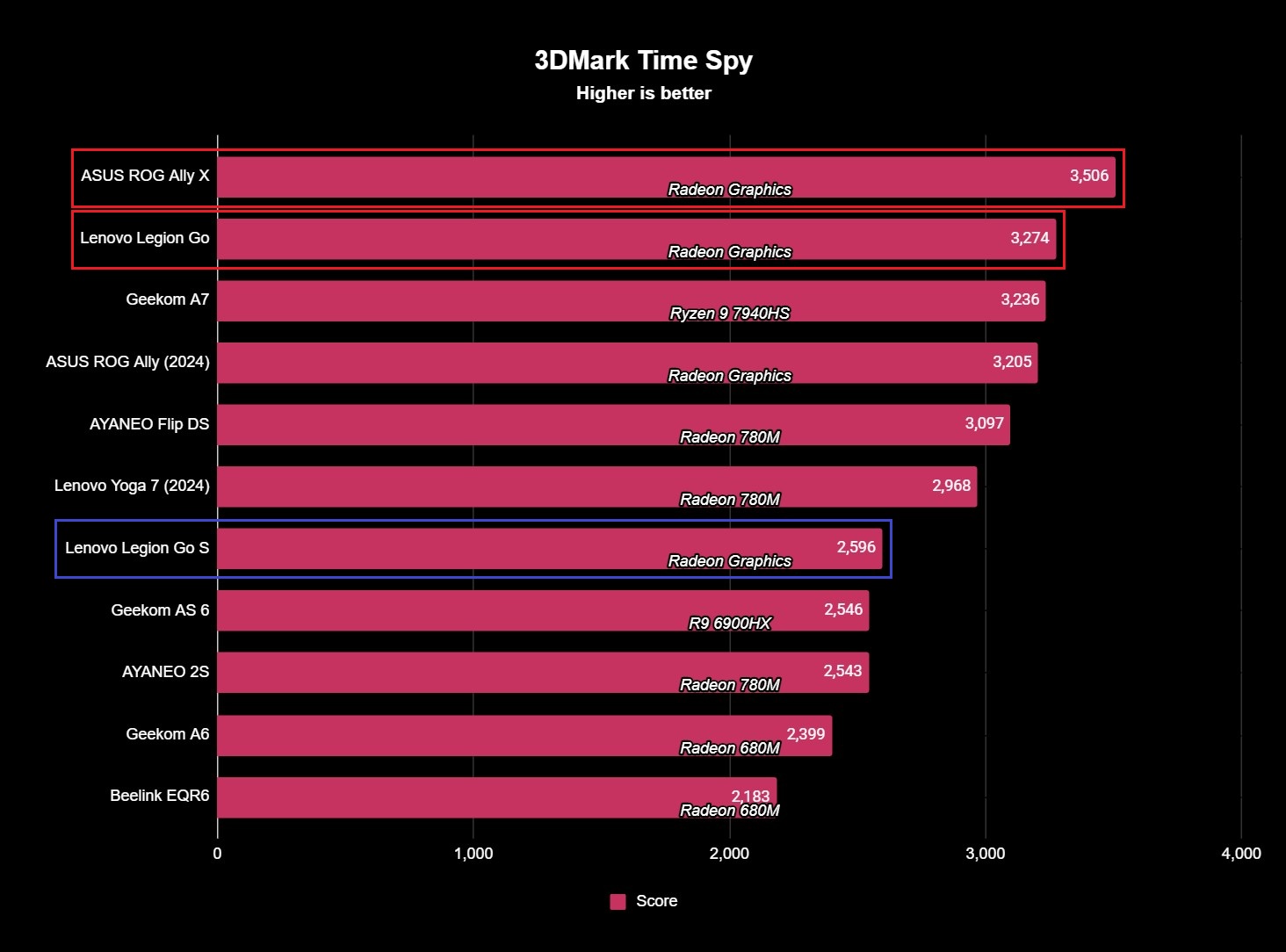
Regarding regular usage, the Lenovo Legion Go S functions smoothly. It starts up and resumes from sleep swiftly without much delay, and there aren’t many problems encountered while opening applications or starting games. With its 32GB RAM and a fairly speedy 1TB SSD, it handles common tasks effortlessly. However, when you compare the Legion Go S to popular handheld gaming PCs, you’ll notice that it falls short quite rapidly.
In a CPU rendering test using Cinebench 2024, the Legion Go S managed single-core and multi-core scores of 70 and 358 respectively. Meanwhile, the ASUS ROG Ally X outperformed it significantly, delivering a 43% improvement in single-core performance and an impressive 102% boost in multi-core performance. Similar results were seen in Geekbench 6 tests, with the Ally X scoring 38% higher in single-core and 84% better in multi-core tests. Switching to GPU performance with 3DMark’s Time Spy benchmark, the ASUS ROG Ally X was found to be 35% stronger than the Legion Go S.
As a tech enthusiast, I can’t help but feel let down by the price tag of the Lenovo Legion Go S. It’s clear that AMD intended this gaming handheld to be a budget-friendly option, and yet it’s priced comparably to the seven-month-old Ally X, which is only $70 more at full price. However, I’ve seen the Ally X go on sale, making it an even more attractive choice.
Now, don’t get me wrong, the original Lenovo Legion Go is still a solid device, but it’s only slightly slower than the Ally X and can often be found for $600-650, which includes 1TB of SSD storage. The Ryzen Z2 Go falls short in CPU performance compared to the entry-level, underpowered, 6-core AMD Ryzen Z1 powering the ROG Ally. However, the Legion Go S makes up for it with its superior graphical capabilities.
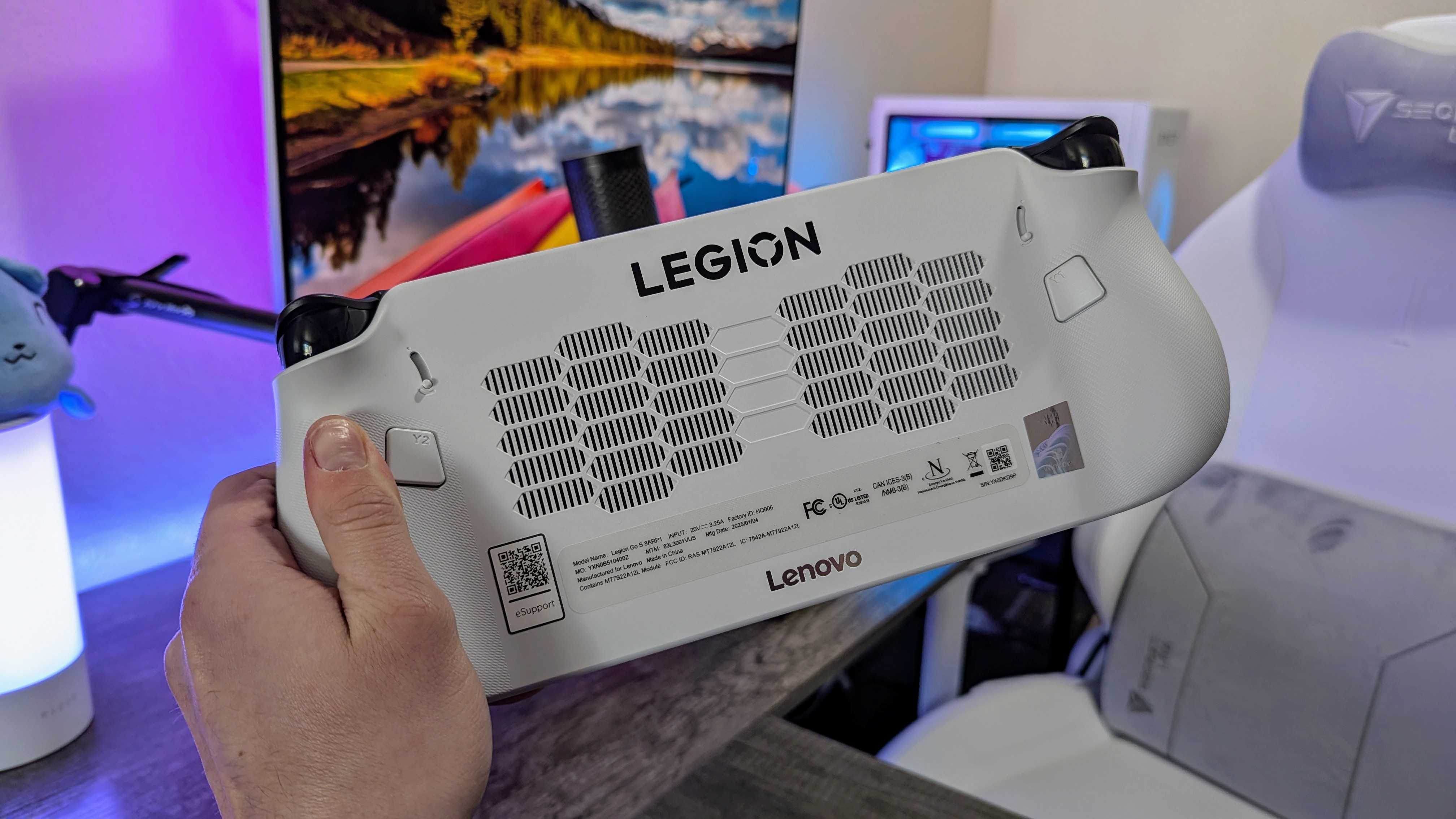
When it comes to gaming, the Lenovo Legion Go S has enough power under the hood to maintain a steady 30 frames per second in most contemporary PC games. However, compared to the Lenovo Legion Go and ASUS ROG Ally/Ally X, it is more likely to encounter its limits, despite the upgraded memory in the Lenovo Legion Go S.
- Forza Horizon 5 — 66 FPS (Low preset, 1200p resolution, 120Hz refresh rate, v-sync enabled, AMD FidelityFX Super Resolution disabled)
- Gears 5 — 55 FPS (Low preset, 1200p resolution, uncapped framerate, v-sync enabled)
- Call of Duty: Black Ops 6 — 51 FPS (Minimum preset, 1200p resolution, 120Hz refresh rate, v-sync enabled, AMD FidelityFX Super Resolution 3 set to “Balanced,” AMD FSR 3 Frame Generation disabled)
- Cyberpunk 2077 — 31 FPS (Steam Deck preset, 1200p resolution, 120Hz, v-sync enabled, AMD FidelityFX Super Resolution 3 set to “Auto,” AMD FSR 3 Frame Generation disabled) | 50 FPS (AMD FSR 3 Frame Generation enabled)
I repeated the identical tests on the ASUS ROG Ally X across Forza Horizon 5, Gears 5, and Call of Duty: Black Ops 6, keeping the settings consistent. In Forza Horizon 5, the Ally X delivered a 24% improvement with an output of 82 FPS. A nearly 55% increase was observed in Gears 5 as the Ally X managed 85 FPS. Lastly, Call of Duty: Black Ops 6 showed a similar trend, with the Ally X scoring an average framerate of 69 FPS, which represents a 35% boost compared to the Legion Go S.
To clarify upfront, let me say that the performance gaps you’re seeing aren’t because of a higher resolution 1200p display on the Legion Go S. The difference between a 16:9, 1080p screen and a 16:10, 1200p screen is minimal, resulting in approximately a 5% performance reduction, not the 35% decrease you’ve noticed in Gears 5. While games can be played on the Legion Go S, performance consistency is much better on the ROG Ally X. Moreover, games are more stable on the ROG Ally X as well; Black Ops 6 frequently crashed on the Legion Go S, but I haven’t encountered any such issues with the ROG Ally X.
Regarding heat performance, the Legion Go S performs admirably. It remained cool enough for comfortable handling throughout usage, and its fans were audible yet never reached an irritating or excessively loud volume. Under 25 rounds of 3DMark’s Time Spy benchmark to test thermal management, it demonstrated a framerate consistency of 95.5%, slightly teetering on the acceptable side. Over time, this device may experience throttling, but not to an extent that I would categorize as a significant drawback.
Legion Go S review: Battery experience
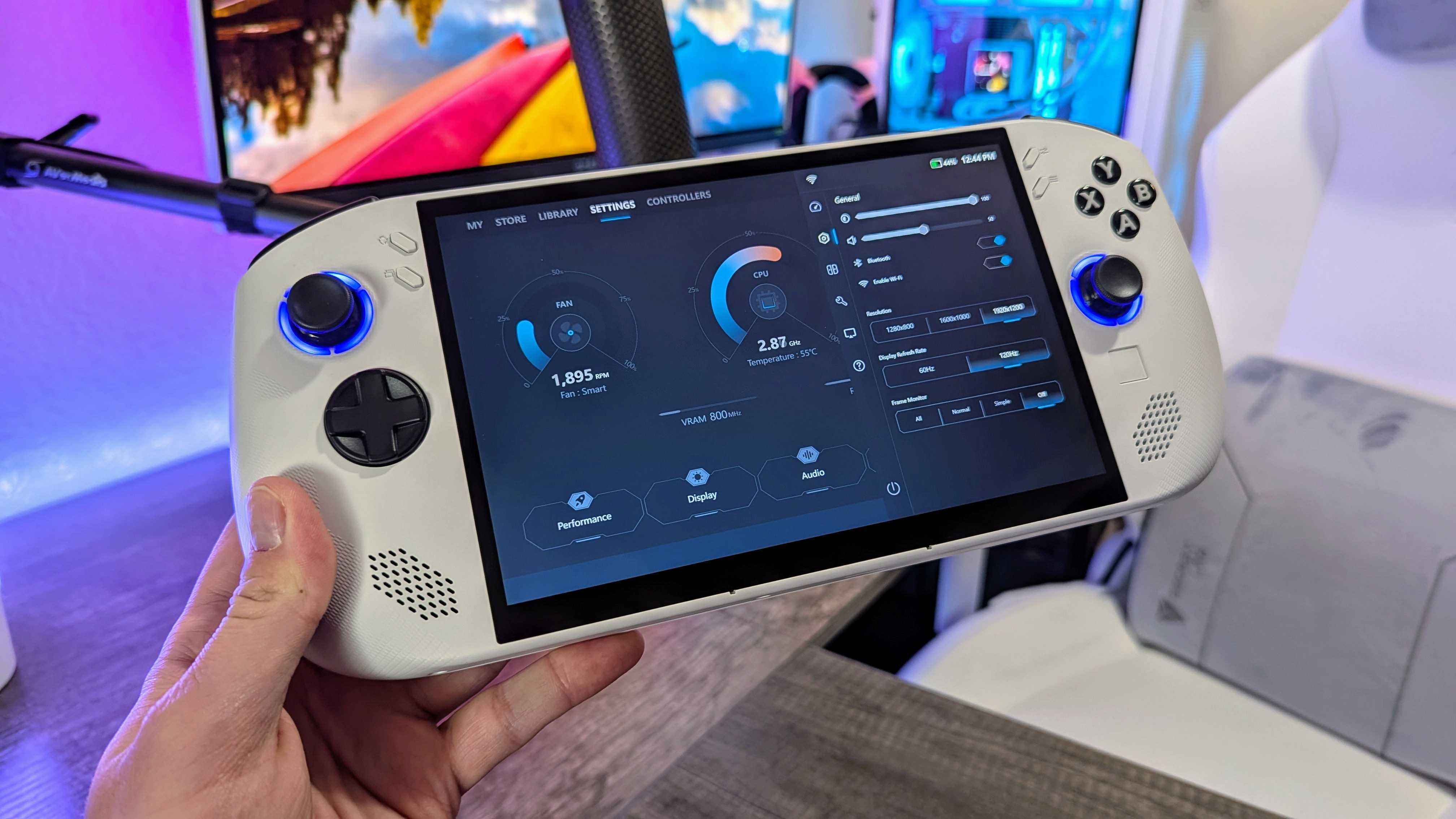
- The Legion Go S has the same sized battery as the Legion Go.
- Despite the less powerful chip, the Legion Go S enjoys similar endurance.
- That means about 1.5 hours of heavy gaming, or around 3 casually.
- Battery rating: ⭐⭐⭐½
The Lenovo Legion Go S sports a similar 55.5Whr battery to the Lenovo Legion Go, and its overall playtime is quite comparable. This implies that when playing demanding games such as Call of Duty: Black Ops 6, you’ll notice the battery level depleting rapidly by the minute. However, despite the AMD Ryzen Z2 Go in this handheld being less potent than the Z1 Extreme in the Legion Go, you can still anticipate approximately 1.5 hours of intense gaming.
On less intense settings, this device can extend its battery life by approximately three hours, with the potential for even more if you adjust all settings to their lowest levels. In Procyon’s One Hour Battery Consumption test under the “Performance (DC)” power profile and a 200nit display brightness, the Lenovo Legion Go S lost about 20% of its battery capacity in an hour while running a typical Microsoft Office workload. Playing an HD video at half volume consumed about 15% of the battery.
Using a 65W Type-C charger offers relatively fast charging speeds; it can get your device from 0% to 70% in around 30 minutes and fully charged within about 1.5 hours. However, due to its rapid power consumption, you may find yourself needing to recharge this handheld frequently.
The battery-powered performance of the Legion Go S decreases slightly compared to when it’s plugged in, but it’s still within reasonable limits. For instance, in Geekbench 6, the multi-core performance dropped by about 11% and 5% respectively under different power profiles. Similarly, in the graphics-intensive benchmark, 3DMark’s Time Spy, there was a decrease of around 6%. In Call of Duty: Black Ops 6, we observed a similar drop in frame rate. It’s important to note that while the ASUS ROG Ally X also experiences this performance dip, it happens at a lower wattage than the Legion Go S, which significantly enhances its battery life.
Legion Go S review: Software experience
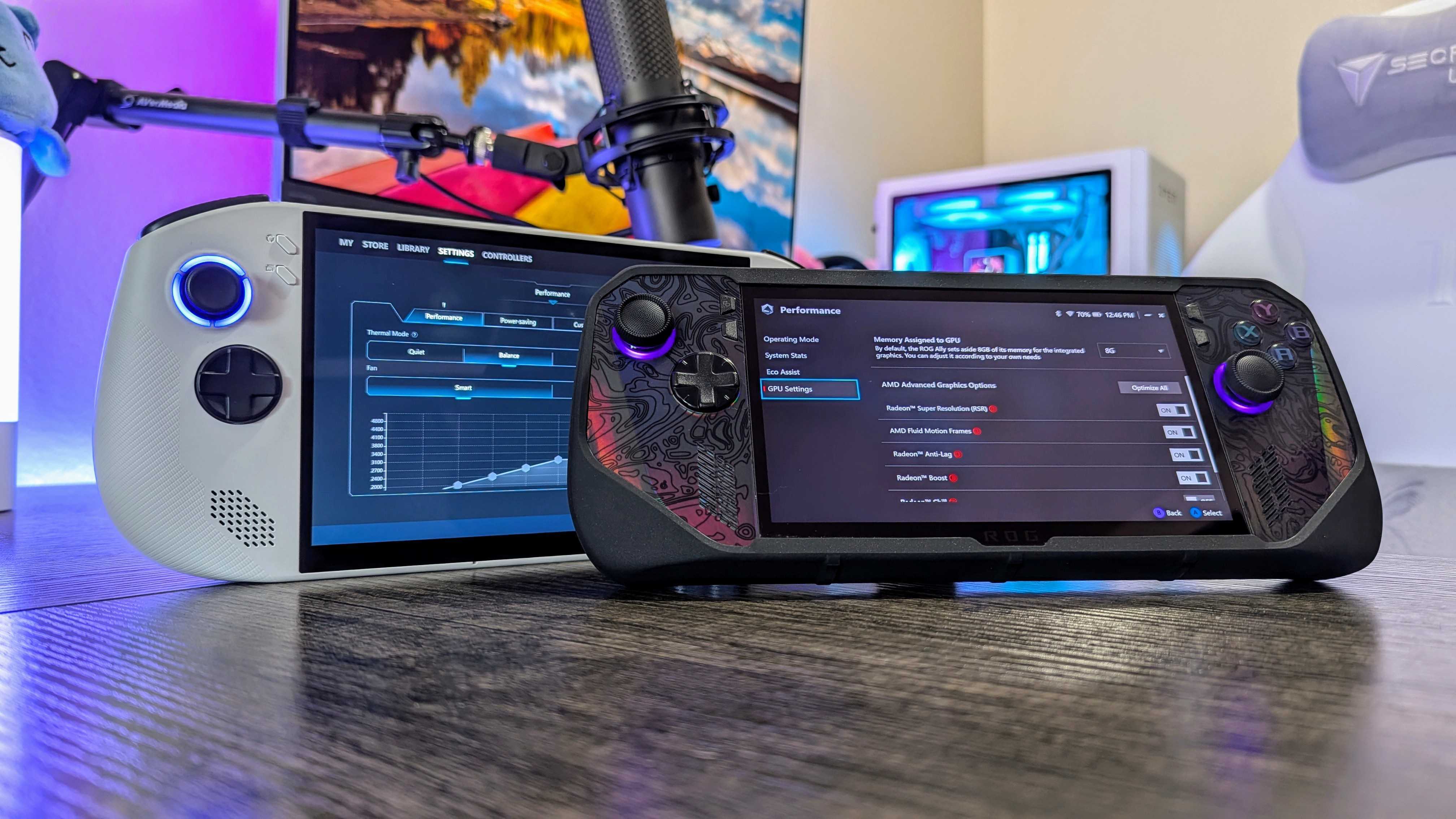
- This handheld runs a clean build of Windows 11 with the Legion Space app.
- Windows is getting better on handhelds, but it’s still far from perfect.
- The new Legion Space app still leaves a lot to be desired, too.
- Software rating: ⭐⭐⭐½
In simpler terms, the original Lenovo Legion S model runs on Windows 11, with very few extra applications installed apart from AMD’s software and the Legion Space suite. While Windows has been improving for gaming handhelds and is expected to get better, it’s still a bulky operating system running on a small screen, making navigating the Windows interface a bit awkward or inconvenient.
Handheld gaming devices set themselves apart by offering unique software solutions, and ASUS is currently leading on the Windows platform thanks to its comprehensive Armoury Crate software. However, Lenovo has struggled since the launch of the Legion Go, but recent updates and a revamped design with the Legion Go S suggest a shift in their fortunes… though the Legion Space software still needs improvement.
The updated interface on the Legion Go S is straightforward and user-friendly with its controls, yet it can be quite touchy in certain aspects; the shortcut menu is a notable example, as navigating between and within menus frequently necessitates multiple inputs for recognition. In contrast, Armoury Crate on the ROG Ally is generally more reliable in this aspect and offers an abundance of extra features that are not available with Legion Space.
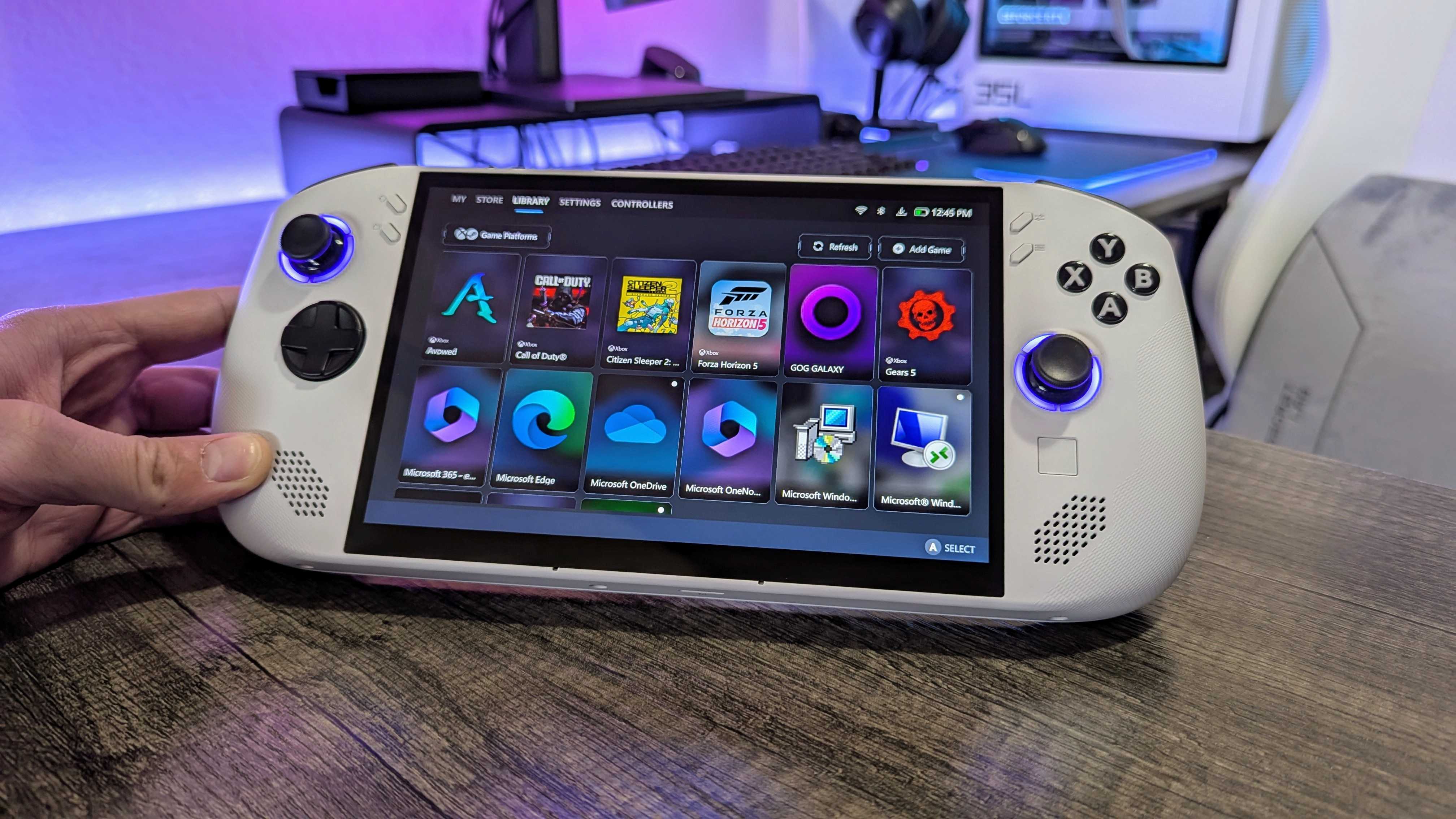
In some gaming handhelds like the ASUS ROG Ally, you can adjust the memory allocation between the system and GPU yourself via Armoury Crate. On the other hand, the Legion Go S, which boasts 32GB of RAM (the highest among mainstream PC gaming handhelds), often didn’t allocate enough VRAM to games and applications initially, causing them to crash or fail benchmark tests. To remedy this issue, I had to enter the device’s BIOS settings.
Beyond this, the ASUS ROG Ally lineup boasts exceptional compatibility with AMD and a wide range of Ryzen attributes. Updates are smoothly provided via Armoury Crate, and ASUS provides extensive control over your ROG Ally’s performance. This control extends to fine-tuning AMD Ryzen features. Moreover, the ROG Ally supports additional AMD Ryzen functions to optimize its hardware’s performance and efficiency, such as the optimal HYPR-RX performance profile that also activates AMD’s Fluid Motion Frames technology.
The Lenovo Legion Go S lacks extensive control over AMD Ryzen features when compared to the ASUS ROG Ally. While you can still utilize most AMD Ryzen features via the AMD app, the Legion Space offers limited control at this time. Lenovo aims to enhance integration with AMD and update delivery through Legion Space, but these improvements don’t currently benefit the Legion Go S. From a software standpoint, the ASUS ROG Ally is the undisputed leader in this regard.
Legion Go S review: Controls and other hardware
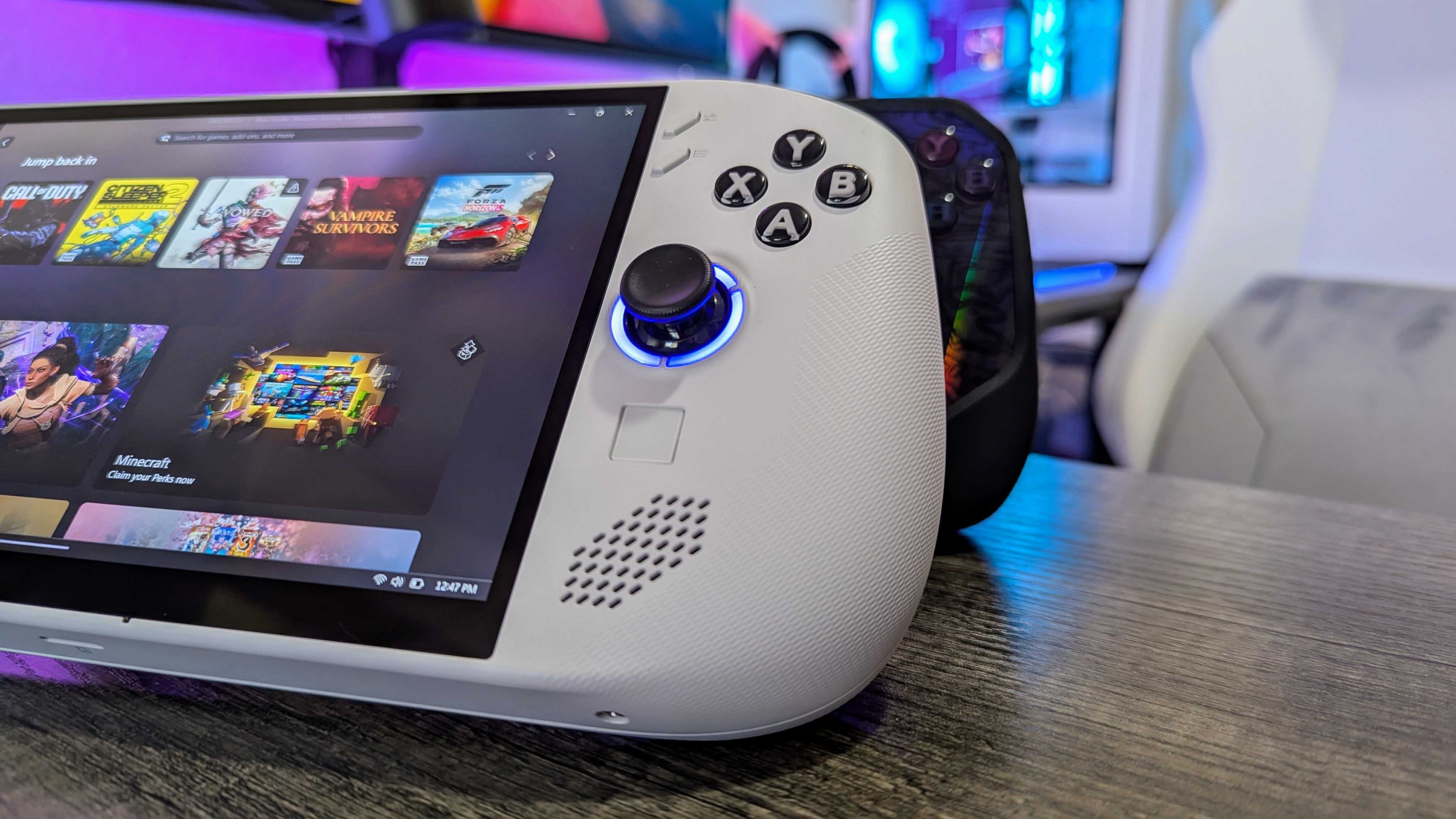
- The Legion Go S’ controls are responsive, precise, and comfortable.
- You also get a surprisingly decent touchpad to control your cursor.
- The rest of the Legion Go S hardware continues that quality.
- Other hardware rating: ⭐⭐⭐⭐½
When it comes to a handheld gaming device like the Lenovo Legion Go S, the quality of its controls is crucial. Luckily, Lenovo has done an impressive job with the Legion Go S, despite the built-in controls rather than the detachable ones found on standard Legion Go models. The Legion Go S features Hall Effect thumbsticks for better precision and durability, robust triggers with single-stage trigger locks, comfortable grips that have a slightly hard texture, and even a 6-axis gyroscope for added functionality.
Among the gaming handhelds I’ve tried, the Lenovo Legion Go S stands out for its comfortable design and responsive controls. The actions triggered by these controls are reliable and tactile, making them easy to predict. Surprisingly, the small touchpad beneath the right thumbstick is remarkably useful, offering precise cursor movements with subtle adjustments. The rear buttons, which can be remapped, are also strategically positioned. While I have no complaints about the controls, I do miss dedicated Xbox and Share buttons on this device.
Beyond its controls, the Legion Go S delivers a solid performance using Wi-Fi 6E and Bluetooth 5.3 for wireless connectivity, showcasing both dependability and efficiency. Its twin speakers offer decent sound quality with good depth and clarity, though they may not reach high volumes. The dual-microphone array functions well when needed.
I find one issue with the Legion Go S: it doesn’t support biometric authentication for Windows Hello, such as a fingerprint sensor built into the power button. This means you need to enter your PIN each time, which can be inconvenient. Compared to that, even though the ROG Ally’s fingerprint sensor might not always work perfectly, having one is still preferable to not having one at all.
Legion Go S review: Final thoughts
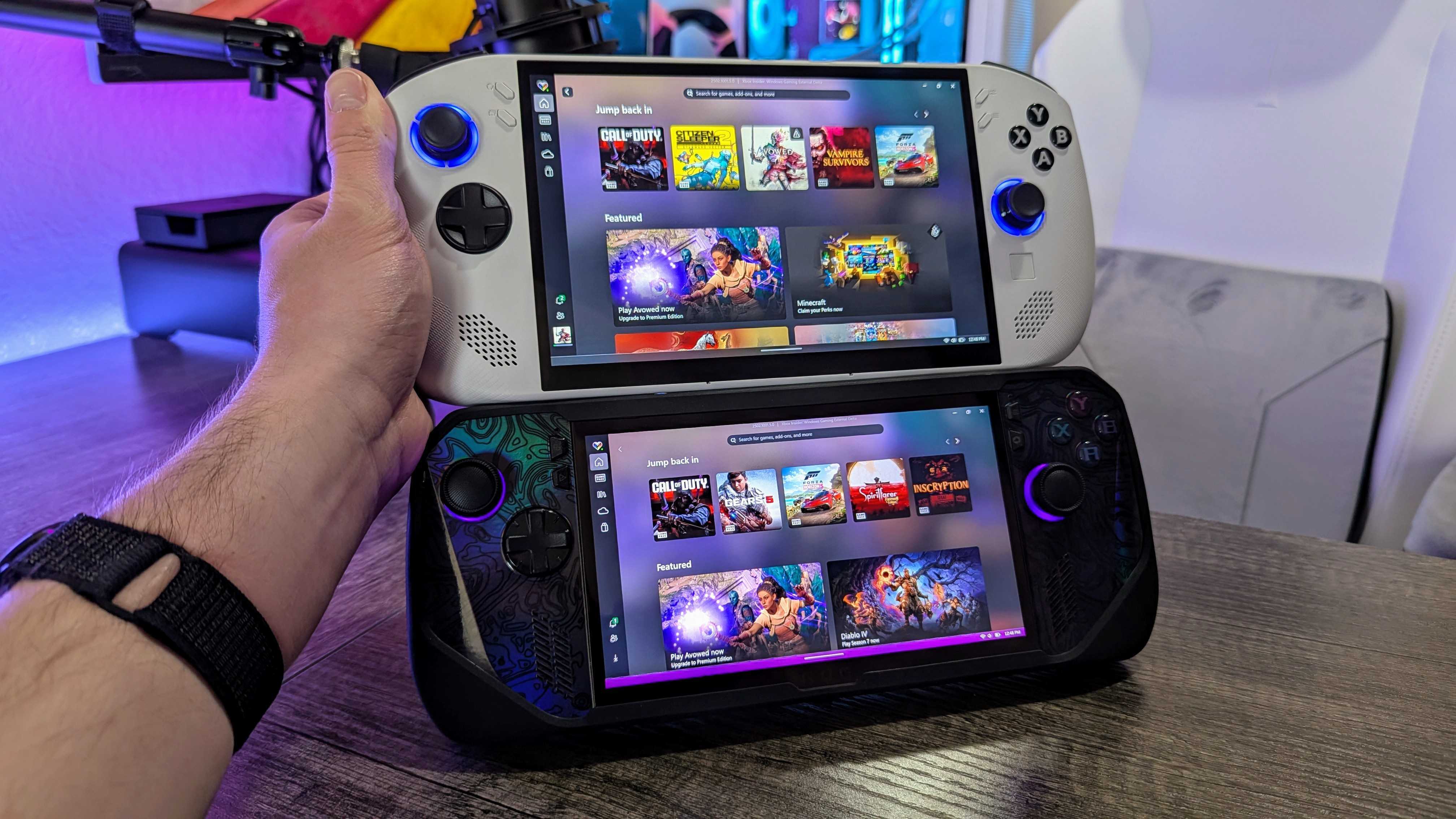
You should buy this if …
✅You want one of the most comfortable handhelds
The Lenovo Legion Go S excels in design and ergonomics, offering comfortably curved handles that optimally place you for using top-notch, dependable controls. Remarkably, the Legion Go S is more comfortable than the ROG Ally X despite its larger and heavier build, which is quite an accomplishment.
✅You know you want Windows and not SteamOS
Those seriously pondering over the Legion Go S might find it beneficial to hold off, especially for the SteamOS version. However, if your heart is set on this device and you’re keen on having full Windows 11, the Legion Go S stands as the sole gaming handheld that officially provides this option.
You should not buy this if …
❌You want great gaming performance for your money
The AMD Ryzen Z2 Go in the Lenovo Legion Go S isn’t a poor processor, but it’s not optimally suited at its current price point. In fact, the Legion Go and ROG Ally run circles around the Legion Go S in every game you’re likely to play, which is significant considering they all fall within the same price range.
❌You’re willing to wait for the SteamOS version
The Lenovo Legion Go S represents the first, third-party gaming handheld running SteamOS, boasting an attractive design and generous screen size. If priced appropriately upon release later this year, the SteamOS edition of this device may alleviate concerns regarding its worth and performance.
The Lenovo Legion Go S seemed poised to excel, built upon Lenovo’s efforts to dominate the portable PC gaming market. Sporting a sleek design, refined hardware, and an eye-catching 8-inch display, the device shines in many aspects. However, I find myself disappointed with the Legion Go S because despite having all the necessary components, Lenovo fell short on the basics.
The AMD Ryzen Z2 Go is tailored for budget gaming handhelds, yet the Legion Go S deviates from this mold. Instead, it’s a top-tier gaming device that comes with an expensive price, however, the Ryzen Z2 Go struggles to meet these high standards. In terms of performance and battery life, the Lenovo Legion Go S lags behind the ASUS ROG Ally X, and doesn’t provide compelling reasons for preferring it over the original Lenovo Legion Go.
The Lenovo Legion Go S is priced at $729.99 in Best Buy, and I find it difficult to endorse it given its current price tag. However, if the SteamOS-powered Lenovo Legion Go S can be sold for $500, even with less RAM and storage, my perspective might change significantly. At this moment, it’s advisable to hold off on purchasing and wait for either the ASUS ROG Ally X or a sale on the Lenovo Legion Go to arrive instead.
Read More
- Forza Horizon 5 Update Available Now, Includes Several PS5-Specific Fixes
- Masters Toronto 2025: Everything You Need to Know
- ‘The budget card to beat right now’ — Radeon RX 9060 XT reviews are in, and it looks like a win for AMD
- We Loved Both of These Classic Sci-Fi Films (But They’re Pretty Much the Same Movie)
- Gold Rate Forecast
- Valorant Champions 2025: Paris Set to Host Esports’ Premier Event Across Two Iconic Venues
- Street Fighter 6 Game-Key Card on Switch 2 is Considered to be a Digital Copy by Capcom
- The Lowdown on Labubu: What to Know About the Viral Toy
- Karate Kid: Legends Hits Important Global Box Office Milestone, Showing Promise Despite 59% RT Score
- Eddie Murphy Reveals the Role That Defines His Hollywood Career
2025-02-14 15:17